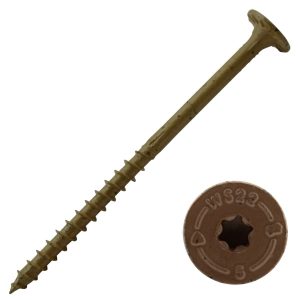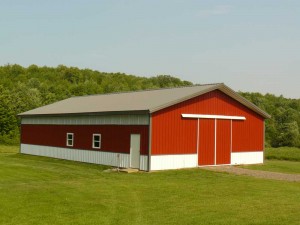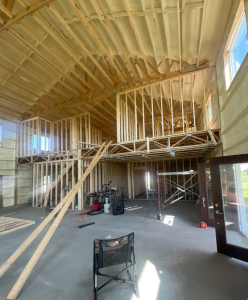If you didn’t read yesterday’s blog – is good to catch up as a lead-in for today – well worth the time. In it I discussed a problem a reader had asked for tech support about an insulation issue.
So today – yet another reader has written….
“I am in the process of finishing a pole building. The building will be used as my workshop and it will be heated, I live in Washington State. The contractor that put up the exterior placed R-23 Kraft Faced fiberglass insulation between the 2 X 6 rafters with the facing against the metal corrugated roof. This means that the vapor barrier is facing the roof, not the inside of my building. I plan to install sheetrock on the ceiling. It is not uncommon for the temperature to dip below zero here, and in the summer reach 100 for a month or more. My question is can I place a 4 mil poly vapor barrier on the interior side of the roof thereby wrapping the fiberglass insulation in two vapor barriers?”
What this building owner has is a pole building with 2×6 roof purlins on edge. Condensation on the inside of steel roofing applied directly on top of purlins can be an issue. This particular builder errantly installed batt insulation with the vapor barrier towards the steel, in efforts to reduce or eliminate the condensation problem.
 If the builder would have properly installed the insulation between the purlins, with the Kraft facing towards the climate controlled area, making sure all seams were sealed, it would have been both effective as insulation and the vapor barrier would have kept the warm moist air inside the building, from condensing on the underside of the roof steel.
If the builder would have properly installed the insulation between the purlins, with the Kraft facing towards the climate controlled area, making sure all seams were sealed, it would have been both effective as insulation and the vapor barrier would have kept the warm moist air inside the building, from condensing on the underside of the roof steel.
Why do I call this scenario “insulation crime”? Because the builder took his client’s hard earned money and in return, gave him nothing but a problem to be solved.
Nearly every jurisdiction in the state of Washington requires both a Building Permit as well as the inspection of new buildings under construction. If this was a permitted building, the Building Inspector should have noticed the improper insulation installation and issued a correction notice – rather than signing off on a final inspection.









